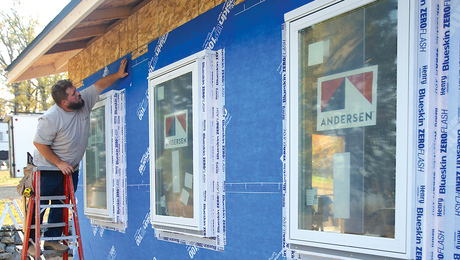Venting bathroom exhaust: through roof or out the eaves?
We are remodeling our bathroom. Our general contractor installed a new exhaust fan in the ceiling and is preparing to run the vent. There was already one existing exhaust fan in the water closet, and it vented straight into the attic. I would prefer that all exhaust be vented to the outside. We live in Texas where the humidity is already high, and I do not want to add additional moisture into the attic.
My contractor wants to vent the exhaust out the eave, rather than cutting a hole in the roof. Would I be okay if he ran the exhaust through that eave?



















Replies
If you have someone QUALIFIED, then running it out the roof is better. If your contractor doesn't know how to properly install a roof penetration (which from your writing I doubt he doubt he does) then you could be in for a roof leak.
Venting at the eave presents its own problem, as you are putting a big ball of moist air next to your house, under your eave. This can lead to paint degradation and more moisture going into your attic through vents. But that might be better than a hack tryoing to put in a roof penetration wrong.
Whatever you do, don't just vent into the attic. Either through the eave or up through the roof will work. Sometimes (for low-slope roofs) going up is actually easier -- getting into the eave requires someone skinnier than most construction workers. And, if through the eave, make sure it doesn't exhaust near a window, and make sure a proper eave vent outlet is used (not one intended for a vertical wall).
Venting into the atticcauses no en d of problems, mostly mold growth based on the high humidity intrioduced to that space. That is a definitel no-no.
Using the eaves is only slightlhy better, as he humidity expelled there can be drawen back into the attic space via siffit vnets/
Best is straight out the roof